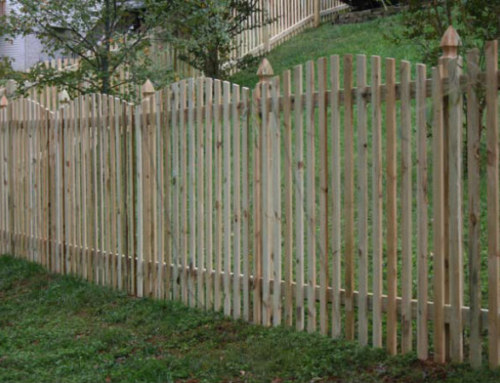History of Wood Fence Lumber in the South
HISTORY OF WOOD FENCE AND DECK LUMBER IN THE SOUTH
In the 1950s to late 1960s, the most popular and durable outside lumber in the south was redwood or western red cedar. This lumber came from west coast old-growth forests. Large trees with high naturally occurring chemicals resisted insects. For a durable outdoor product, this was the lumber of choice. This lumber was beautiful and expensive to use, but there were not any other viable options at the time.
In the mid-1960s to early 1970s, a shift in lumber usage occurred. Low-cost southern yellow pine lumber cut from local renewable forests, used for years in the housing industry, found a new market. Advances in technology produced a method to inject the cell structure of southern yellow pine with insecticide. A new industry was established using low-cost southern yellow pine, a regional product already widely used in the housing industry that now was warranted for termites against the structural integrity of the lumber.
In the mid-1990s to early 2000s, a new entry made it to the East Tennessee market: A Northern White Cedar fence lumber touted to last for generations. This good-looking fence lumber goes under the names of white cedar, red cedar, swamp cedar, coastal cedar, fir, spruce cedar, Canadian cedar, northern cedar, cypress, swamp cypress, and cypress cedar. While it looks like a great fencing material compared to a true western red cedar, this lumber is about a third of the cost. If using less than premium #1 grade for fencing, the cost may be as cheap as 40 cents a picket. Yes, the name is cedar, but make no mistake: You are not getting old-growth western red cedar…unless you ask for it, confirm it on a contract, or confirm installation tags off lumber!
With high-powered marketing, an explosion in the housing market, and an increased need for fencing, this beautiful new White Cedar fence was installed and marketed as Cedar for the Price of Pine! This gorgeous fence became very popular in East Tennessee until homeowners reached the 6 to 8-year mark and realized their cedar fence was being eaten by termites and falling over. So the beautiful “knockoff cedar fence,” that turns from gray to black in 6 months, is highly susceptible to termites (6-8 years life) and you end up replacing the fence in less than 8 years! According to my calculations, that is a very poor deal for the homeowners who thought they were getting a REAL WESTERN RED CEDAR long-lasting fence! Think about it this way: By paying for the fence, staining, and upkeep on the fence for 6 years, then paying for a new fence to replace that fence.. you could have purchased a maintenance-free vinyl fence or aluminum fence!
While White Cedar Fencing in colder Northern climates (with deep freeze lines of 36″) such as Chicago lasts for many years, this same fencing in the south lasts less than 8 years!
WEATHER CONCERNS IN THE SOUTH – HOW THAT AFFECTS YOUR WOOD FENCE
In the South (East Tennessee) we typically have mild winters, little snowfall, and lots of fluctuations in the temperature every few days. In the summertime, even though it may be 80 degrees outside, the lake water is still cold. It may take 30 days of full sun and hot days to warm up the top layer of water. The same is true of the soil we stand on and bugs live in. Our winters are not cold and harsh enough to significantly kill the insect population. Anyone who has lived here very long will remember a warm spell in Dec, Jan, or Feb where you will hear frogs, see flies buzzing around, and maybe get a mosquito bite.
Our frost line, for all practical purposes, is probably about 9″ deep, whereas Chicago and further up north is closer to 36″ deep frost line. This means that wood fence products in the north have a hiatus from termites and ants eating posts. Those same wood fence products in East Tennessee are continuously being damaged 24 hours a day once infested by termites and ants. The most damage is to the structural posts, which are 2-3 feet deep in the earth, unseen until the damage has already been done.





